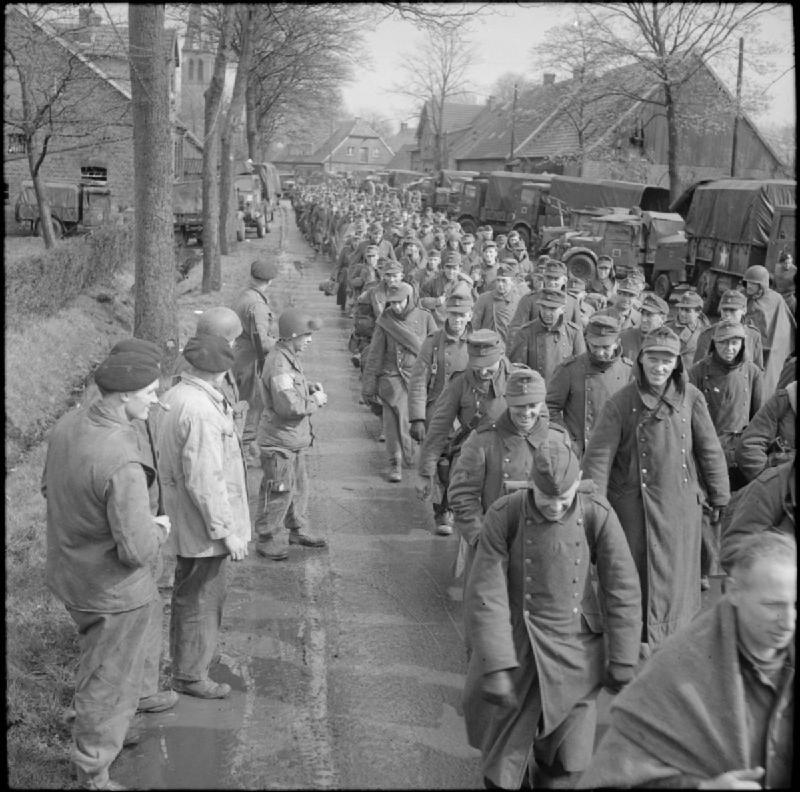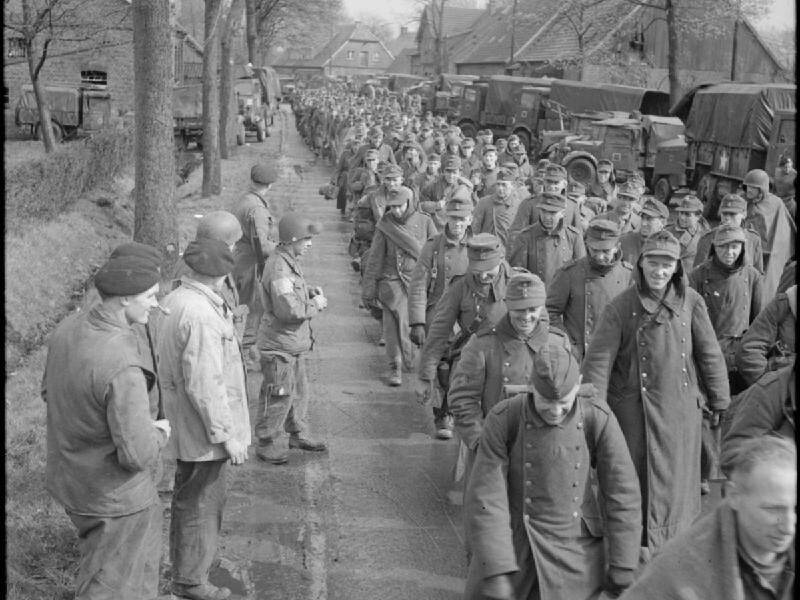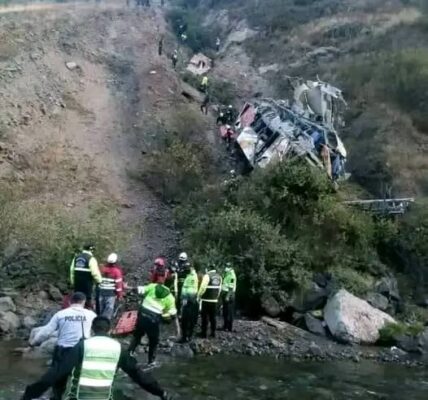- Homepage
- Uncategorized
- End of a nightmare: Thousands of German soldiers march into captivity – Germany, 1945 _de
End of a nightmare: Thousands of German soldiers march into captivity – Germany, 1945 _de

End of a nightmare: Thousands of German soldiers march into captivity – Germany, 1945
World War II was drawing to a close. It was the spring of 1945, and the once-mighty Third Reich was crumbling under the relentless pressure of the Allied forces. German cities lay in ruins, the front had collapsed, and millions of soldiers had surrendered. This striking, colorized image depicts one of those moments: hundreds, if not thousands, of German soldiers marching toward an uncertain future—as Allied prisoners of war.

The scene takes place somewhere in northwest Germany. British soldiers in uniforms with typical berets watch the passing columns of German prisoners. The street is lined with military vehicles and British trucks, and in the background you can see red brick houses – typical of many German villages of that time. It’s a picture of transition: from military pride to total collapse.
The men marching here wear heavy coats and worn uniforms, some with improvised headgear. Their faces reflect exhaustion, resignation, but also relief. For many, imprisonment meant not just surrender—it meant survival. The alternative was certain death at the front or from bombing raids in the cities.

In the final months of the war, large numbers of German soldiers were captured by the Allies. The Western Allies—especially the Americans and British—established large prisoner-of-war camps in France, Belgium, and on German soil. It was the largest mass internment in European history. By the end of 1945, more than 11 million German soldiers were held captive. Many of them would not return home for years—if at all.
Conditions in the camps varied greatly. While British POW camps were comparatively well-organized and largely complied with the Geneva Conventions, the situation in French or Soviet camps was often considerably harsher. Soviet captivity was considered particularly brutal—only about a third of the German soldiers who fell into Soviet hands survived.
But at that moment in the photograph, all of that was still uncertain. The men didn’t know where they would be taken, how long they would stay, or whether they would ever see their families again. For many, it was the end of a long journey—perhaps they had fought for years on the Eastern Front, in Italy, or in France. Now they marched in silent columns, past British soldiers whose expressions fluctuated between indifference and pity.
This photograph conveys more than just a historic event—it shows the moment of utter defeat. But it also shows the beginning of something new: peace. For Europe, for Germany, and for the men in the picture. The guns had been silenced. The noise of battle had died down. Now all that remained were marching boots echoing on wet asphalt.
The story of this painting is also a reminder of how many young men—on both sides—became victims of an ideologically driven war. Many of them had no choice; they were drafted, sent to the front, and thrown into a spiral of violence, suffering, and death. Their defeat meant the end of National Socialism, but also the end of their youth, their illusions, and often their health.
Today, we look at such images with mixed emotions: pity, horror, and contemplation. But they also fulfill an important function. They warn us not to forget history. And they remind us that peace can never be taken for granted—but must be defended anew every day.
Related Posts

Comradeship in the Trenches: Moments in War (Part 224) _de
WWII – German troops in Germany shortly before surrender. World War II – German soldiers prepare for surrender, Germany 1945. Fallen German soldiers are…

Ice and Mud: German Troops on the Eastern Front (Part 225) _de
World War II – German soldiers prepare for surrender, Germany 1945. Fallen German soldiers are buried by German prisoners of war under US supervision in Manche, Normandy…

Advance to the West: Pictures from the French Campaign (Part 61) _de
This photograph shows motorized units during the annexation of the Sudetenland (1938). A Zündapp K-800 motorcycle can be seen. This photograph shows Field Marshal Erwin Rommel during…

Uniform, equipment, field baggage: What the soldier wore — Part 3 _de
In the photo, a German soldier carries an MG-34 machine gun over his shoulder. In the photo, a German military policeman points to a sign indicating a…

From the trench to the staging area: Scenes from the First World War — Part 2 _de
In the photo, a German military policeman points to a sign announcing an impending battle on the Eastern Front (1943). An 8.8 cm anti-aircraft gun is being loaded aboard a…

Everyday life at the front in pictures: German soldiers between duty and rest — Part 1 _de
An 8.8 cm anti-aircraft gun is loaded aboard an Me323 Gigant on the Eastern Front. A Luftwaffe soldier rides a BMW R-75 motorcycle. In the photo, German…




